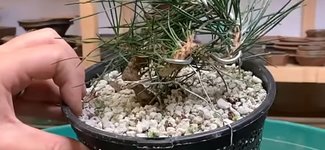location: New England
ordered a couple 3yo JBP nursery stock to play with while I wait for seeds to grow. I don't see any obvious node from prior years, buds, and clearly no branches. they are 14-18 inch tall and 3/16 to ¼ inch thick. They don't seem to be flexible. is there any way to make them into Bonsai? I can try to wire and force some movement into one of them. Appreciate any suggestions!
ordered a couple 3yo JBP nursery stock to play with while I wait for seeds to grow. I don't see any obvious node from prior years, buds, and clearly no branches. they are 14-18 inch tall and 3/16 to ¼ inch thick. They don't seem to be flexible. is there any way to make them into Bonsai? I can try to wire and force some movement into one of them. Appreciate any suggestions!


